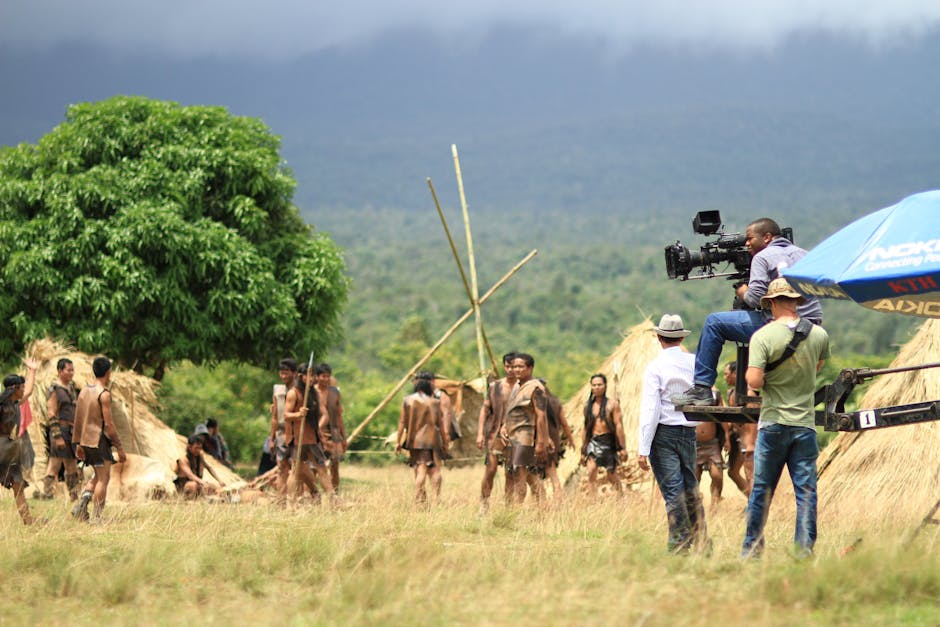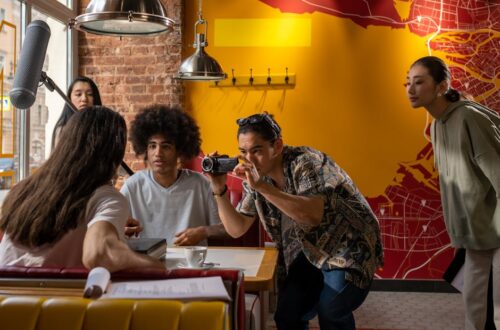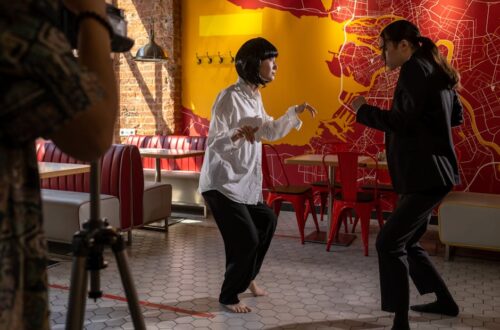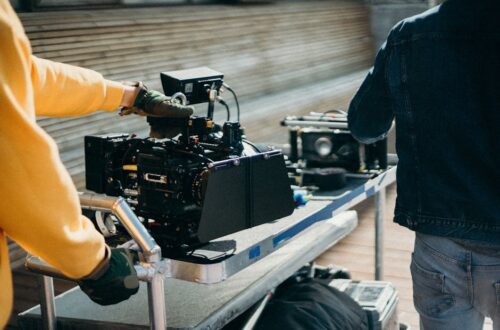Behind the scenes is where the true magic of TV and film production unfolds. At Scene Flow – Scenlo, we dive deep into the hidden flow that transforms an idea into a captivating story on screen. From the first spark of inspiration to the final cut, every production is a tapestry woven by countless hands, each playing a vital role in bringing stories to life.
The Five Stages of TV & Film Production
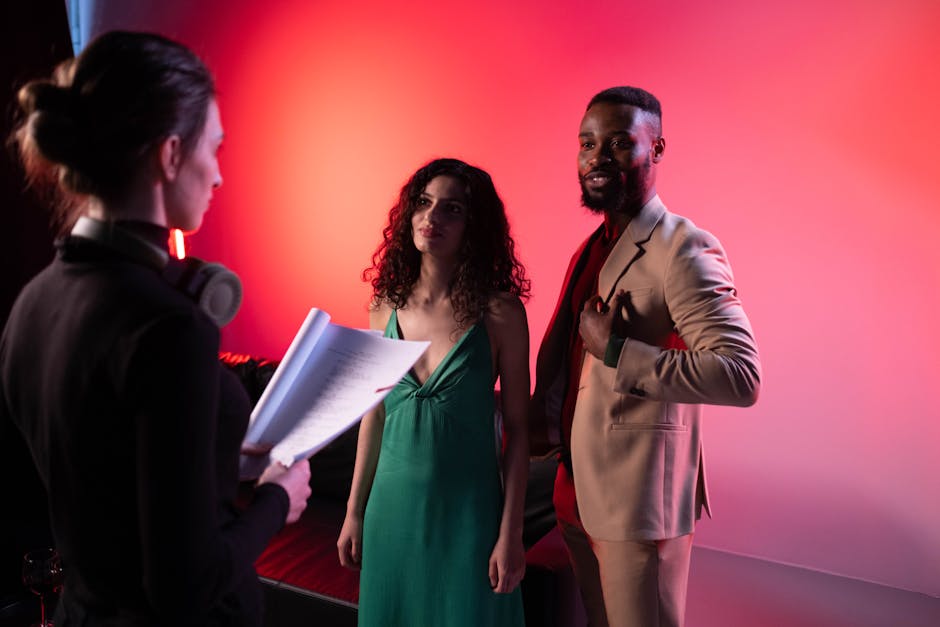
Every memorable film or TV show you’ve watched is the result of a meticulously orchestrated process known as the five stages of production. These are: development, pre-production, production, post-production, and distribution. Each stage is a world unto itself, filled with specific challenges, creative decisions, and unsung heroes working tirelessly behind the scenes.
In the development stage, a film or show is little more than a spark—an idea being shaped into a viable project. Writers draft scripts, producers secure financing, and the creative vision begins to take form. This phase is often invisible to audiences but is the bedrock of every production.
Once the concept is solidified, pre-production begins. Here, scripts are finalized, locations are scouted, casting is completed, and every logistical detail is planned. The production designer, costume and makeup departments, and art directors all step in to build the world the audience will soon inhabit. Schedules are drawn, equipment is rented, and the crew is assembled.
The heart of the process is production, or principal photography. This is where cameras roll, actors perform, and the director’s vision takes shape. It’s a whirlwind of activity, with assistant directors managing call sheets, grips and gaffers handling equipment and lighting, and the set buzzing with creative energy. Every scene is meticulously blocked, rehearsed, and captured from multiple angles. The production stage is where the script leaves the page and becomes a living, breathing story.
After the last scene is shot, the project moves into post-production. Editors assemble raw footage, sound designers add effects, composers score the music, and colorists ensure every frame looks perfect. Visual effects artists may craft the impossible, while voice-over artists and narrators add the finishing touches. The goal is to polish the story until it’s ready for audiences.
Finally, distribution brings the finished work to the world. Whether it’s a theatrical release, streaming debut, or TV broadcast, this stage ensures the story finds its audience. Marketing teams, publicists, and distributors work behind the scenes to generate buzz and get eyes on the screen.
Meet the Unsung Heroes: Key Behind the Scenes Roles
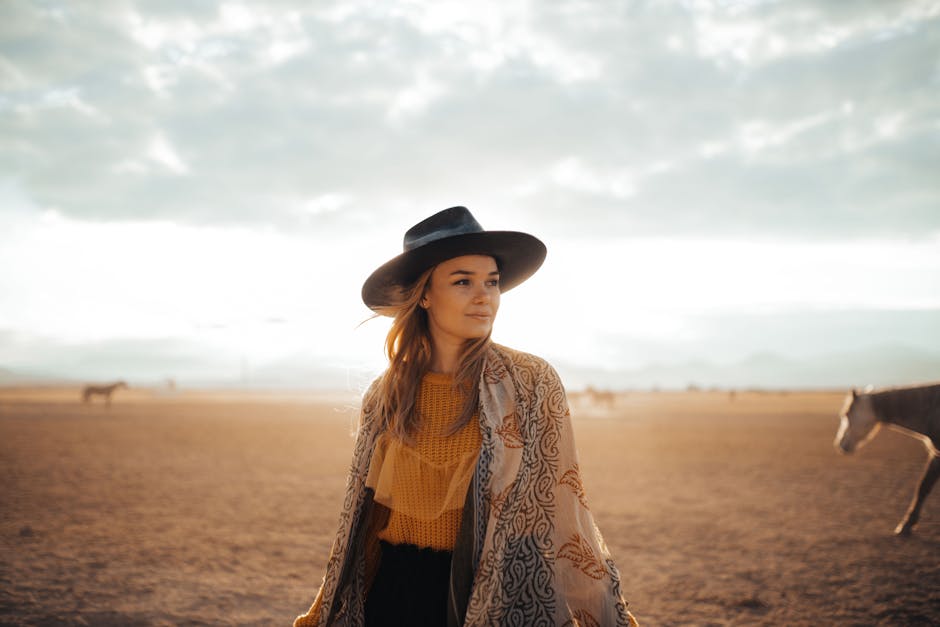
While actors and directors often take the spotlight, it’s the behind the scenes crew who form the backbone of every production. From the first assistant director keeping the set on schedule to the gaffer shaping the lighting, each role is crucial to the flow of storytelling.
Producers oversee the entire process, balancing creative ambition with budgetary realities. Writers craft the narrative, while directors translate words into images. Cinematographers (or directors of photography) design the visual language, choosing camera angles, lenses, and lighting to evoke emotion.
The grip department handles rigging and movement of cameras, while the gaffer manages the lighting team. Production designers and set dressers create immersive environments, and the costume and makeup teams transform actors into their characters. Sound mixers capture dialogue and ambient noise, ensuring every word is heard.
During post-production, editors shape the story’s rhythm, sound designers add depth, and visual effects artists make the extraordinary possible. Each specialist brings expertise and passion, often working long hours to perfect their craft. Their dedication is what makes the final product seamless and immersive.
The Flow of a Filming Day: From Call Sheet to Cut
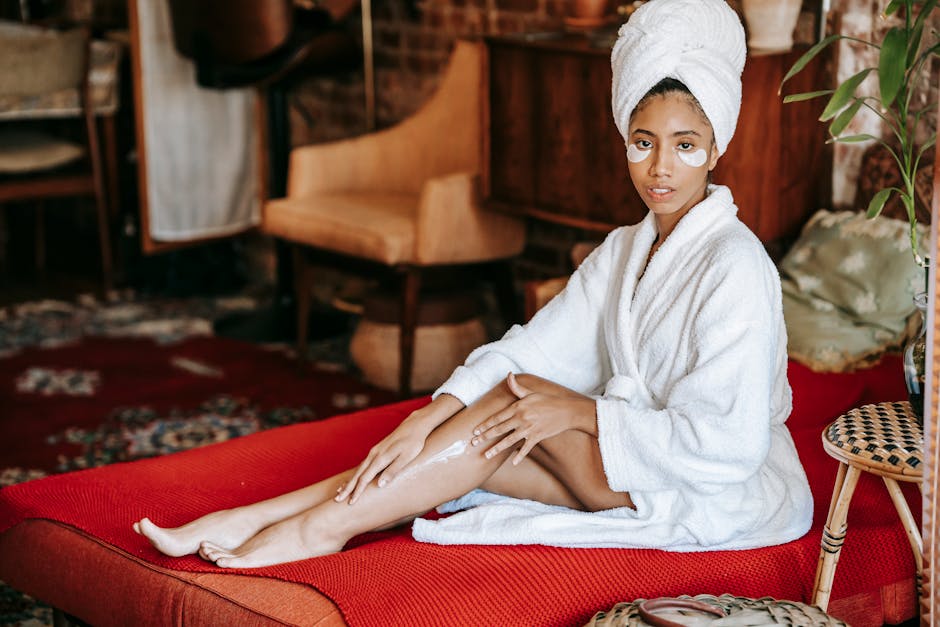
Photo by Sora Shimazaki on Pexels
A typical day on set is a masterclass in organization and teamwork. It begins with a call sheet—a detailed schedule outlining who needs to be where and when. The first and second assistant directors orchestrate the day, ensuring everyone is on time and every scene is ready to shoot.
The grip and lighting teams arrive early to set up rigs and lights, while production designers and set dressers prepare the environment. Actors head to makeup and costume, transforming into their roles. The director blocks scenes with the cast, planning every movement and camera angle.
When cameras are ready, the assistant director calls for quiet, the sound team starts recording, and the camera operator rolls. The clapper loader slates the take, and the director calls “Action.” After the scene is captured, the director reviews the footage, and the process repeats for each shot on the schedule.
This flow is repeated throughout the day, with each department working in harmony to capture the story. Breaks are scheduled, adjustments are made, and challenges are overcome. It’s a dance of creativity and logistics that continues until the day’s footage is complete.
Behind the Scenes Challenges: What Audiences Never See

Photo by Moose Photos on Pexels
For every seamless scene on screen, there are countless challenges behind the scenes. Weather delays, technical malfunctions, last-minute script changes, and unexpected obstacles can disrupt even the best-laid plans. The ability to adapt and problem-solve is essential for every crew member.
Time and budget constraints are constant pressures. Sets must be built and torn down quickly, equipment must be maintained, and every minute counts. The emotional and physical demands on the cast and crew are immense, with long hours and high stakes. Yet, it’s often in these moments of adversity that the most creative solutions emerge.
Behind the scenes, collaboration and communication are key. Departments must coordinate seamlessly, sharing information and resources. Trust and respect are built through shared challenges, forging bonds that last long after the final cut.
The Evolution of Behind the Scenes: Technology and Storytelling
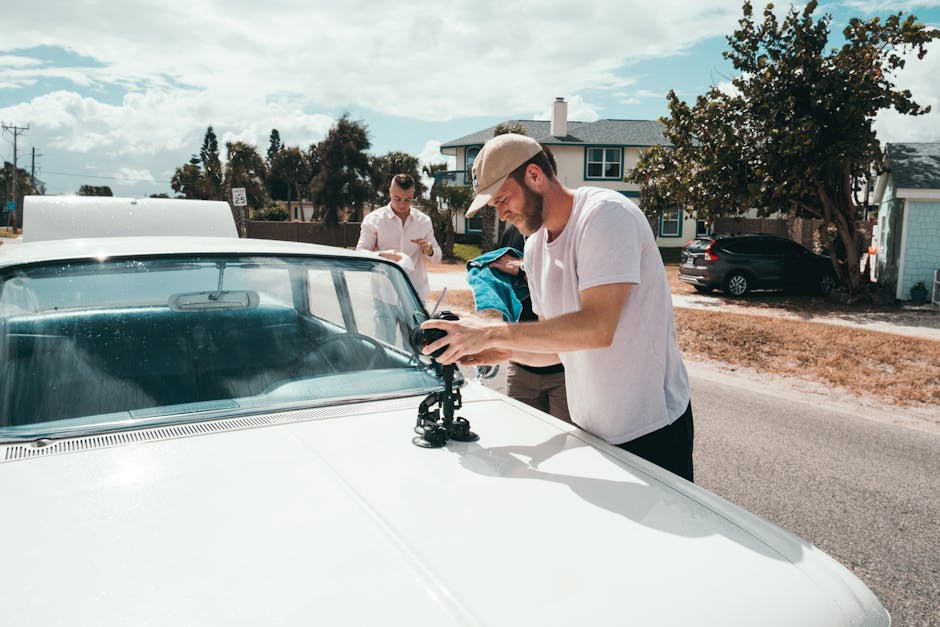
Photo by Kyle Loftus on Pexels
The world of behind the scenes is constantly evolving. Advances in technology have transformed every stage of production, from digital cameras and virtual sets to sophisticated editing software and visual effects. These tools have expanded the possibilities of storytelling, allowing creators to bring even the most ambitious visions to life.
Today, behind the scenes content has become a genre of its own. Audiences crave a deeper connection with their favorite stories, and studios often release making-of documentaries, set tours, and interviews with cast and crew. This transparency humanizes the process, revealing the passion and effort that go into every frame.
Social media and streaming platforms have made it easier than ever to share behind the scenes glimpses, fostering a sense of community between creators and fans. The flow of storytelling now extends beyond the screen, inviting audiences to become part of the journey.
Why Behind the Scenes Matters: The Heart of Storytelling Flow
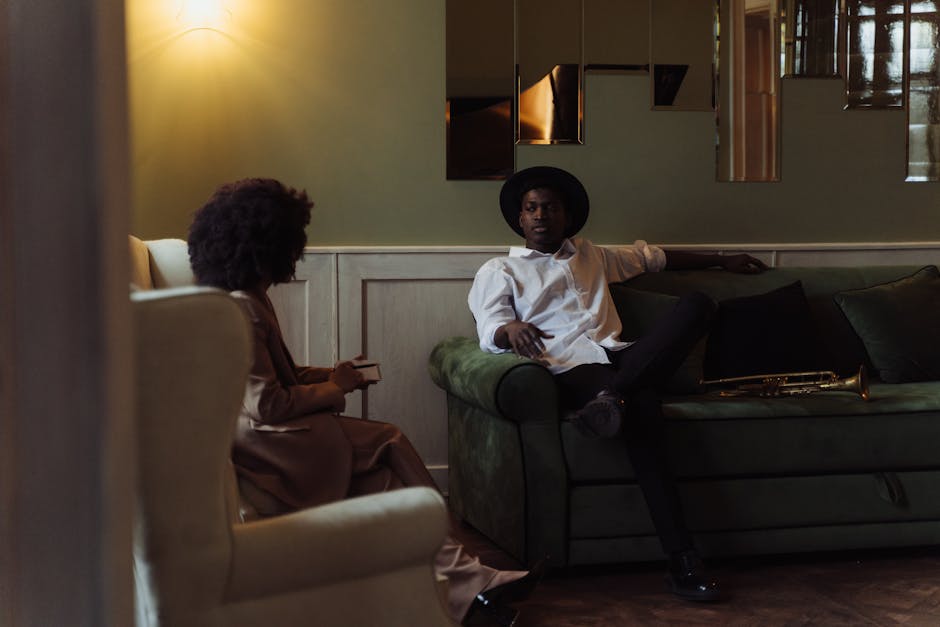
Photo by cottonbro studio on Pexels
Understanding what happens behind the scenes deepens our appreciation for the art of TV and film. It reminds us that every story is the result of collaboration, ingenuity, and relentless dedication. The flow of production mirrors the flow of storytelling itself—a journey from chaos to coherence, from idea to impact.
At Scene Flow – Scenlo, we celebrate the unsung heroes and hidden processes that shape the stories we love. Behind the scenes is more than a technical process; it’s a testament to human creativity and the enduring power of storytelling. The next time you watch a film or show, remember the invisible hands guiding the flow, turning dreams into reality—one scene at a time.
Sources
- https://charlieuniformtango.com/what-is-film-production/
- https://www.aiu.edu.kw/news/behind-the-scenes–how-movies-are-made
- https://en.wikipedia.org/wiki/Behind-the-scenes
- https://www.youtube.com/watch?v=puF9CkvmJt0
- https://joby.com/us-en/creator-journal-blog/filming-behind-the-scenes/
